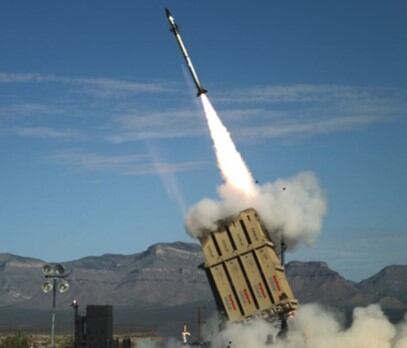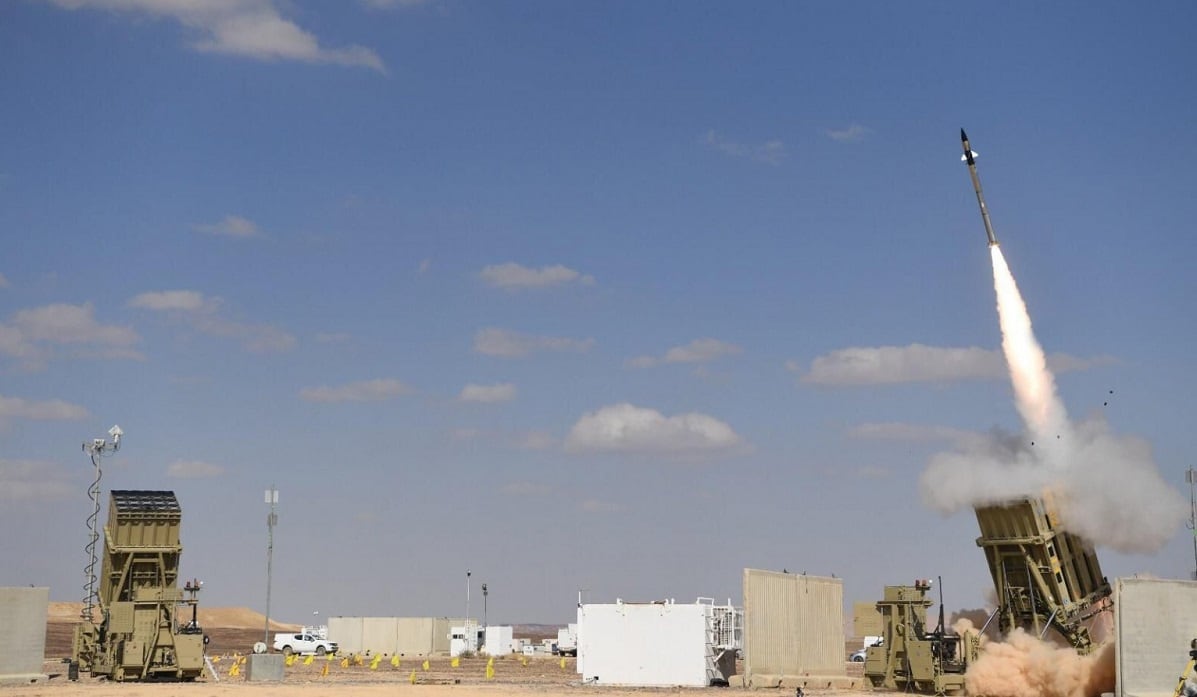On the heels of the announcement the Marine Corps had successfully completed a live-fire test of its medium-range intercept capability prototype, or MRIC, integrating Israel’s Iron Dome launcher and the Tamir interceptor missile, the Corps’ No. 2 officer hailed the breakthrough and confirmed plans to invest in the technology.
“We asked for a wicked solution to a wicked problem, and the MRIC provided that to us,” Gen. Eric Smith told an audience Monday at an event co-hosted by the Center for Strategic and International Studies in Washington and the U.S. Naval Institute headquartered in Annapolis, Maryland. “And we just proved it and tested it. And now we’re going to start moving out to procure that system.”
Marine officials have called MRIC, which is intended to provide effective missile defense during expeditionary advance basing operations, critical to the success of the service’s Force Design 2030 initiative.
The interceptor system, based on the Marines’ AN/TPS-80 ground/air task-oriented radar system, or G/ATOR and Common Aviation Command and Control System and incorporating components of Iron Dome, the world’s most famous missile defense system, has been in development since 2018.
RELATED

Force Design 2030, published by Commandant Gen. David Berger in 2020, called for a special planning team to study medium-range air-defense capabilities.
With the Marine Corps’ “renewed focus” on the Indo-Pacific and its preparation for great power competition, Berger wrote, this was one area where the service fell short.
Testifying on Capitol Hill in 2022, Berger described MRIC as designed to counter large enemy drones, cruise missiles and fixed and rotary-wing aircraft.
“Based on ongoing operations in Ukraine, and lessons learned from recent conflicts in Syria and Nagorno-Karabakh, we believe these [ground-based air defense] programs to be essential for our Marine expeditionary forces,” he said.
Congress, too, has applied pressure on the service to shore up its vulnerabilities in air defense, stating that even in current and past conflicts it has been a matter of concern. The defense budget for fiscal 2021 directed the commanding general of Marine Corps Combat Development Command to brief the House Armed Services Committee on efforts to develop, test and field an interceptor system.
“The committee understands the MRIC is intended to provide a critically needed capability to defend Marine Air Ground Task Force (MAGTF) sites primarily against cruise missiles and secondarily against manned and unmanned aircraft and other aerial threats,” lawmakers said in the bill. “The committee is aware that missile, rocket, mortar threats have become increasingly prevalent with attacks on both U.S. forces and our allies in Iraq.”
In the recent live-fire test, which took place at White Sands Missile Range, New Mexico, on June 30, the system targeted drones simulating enemy missiles, Smith said.
“We successfully tested three out of three ― we actually were set up to go for four, but the drone that we were shooting broke. So we didn’t have anything to kill with the fourth shot,” Smith said.
Officials said in an earlier release that the G/ATOR tracked each target from its launch point, transmitting the information through the command-and-control system to the Iron Dome launch components. At one point, multiple drones on unique trajectories surrounded MRIC at the same time; all were neutralized effectively.
The test, according to Marine Corps officials and Iron Dome maker Rafael, proved not only the accuracy of the system, but also how effectively the technology could integrate into Marine Corps architecture.
Rafael said in a July 18 announcement that MRIC had performed just as a prior Marine Corps simulation of the test had predicted it would.
“That moves us beyond the Stinger, which is what I have now: a fairly short-range air defense capability,” Smith said. “We needed a longer-range air defense capability to be able to cover these highly mobile units.”
Raytheon-made Stinger missiles have a top range of a few miles. While the Marine Corps has not publicized the planned range for MRIC, Iron Dome is effective out to 70 kms, or more than 40 miles.
The June 30 test followed a live-fire event in September 2021, in which targets were launched one by one, rather than simultaneously. A last test later in 2022 will ramp up the threat capability and help the Marines chart a way forward for acquisition of the system.
But Smith, who said the service had held off for two years on investing in a medium-range intercept system until it could prove its effectiveness, indicated that the Corps now had the information it needed.
MRIC could be fielded to Marines by 2025 if all went well, Janes Defence reported earlier in 2022.
Navy budget request documents indicate plans to spend in 2023 nearly $8 million on software, cybersecurity and safety testing in order to deliver a deployable prototype system for developmental testing in 2024. Ultimately, documents state, the service plans to field an MRIC battery to each of its three low altitude air defense battalions by fiscal 2028.
“Now it’s proven. Now we start procuring it,” Smith said. “It’s the thing that was most needed to complete the toolkit that our commanders in the Marine littoral regiments will need to be most effective on the modern battlefield. And I’m pretty excited about it.”




